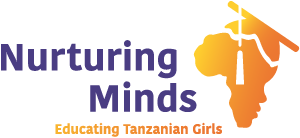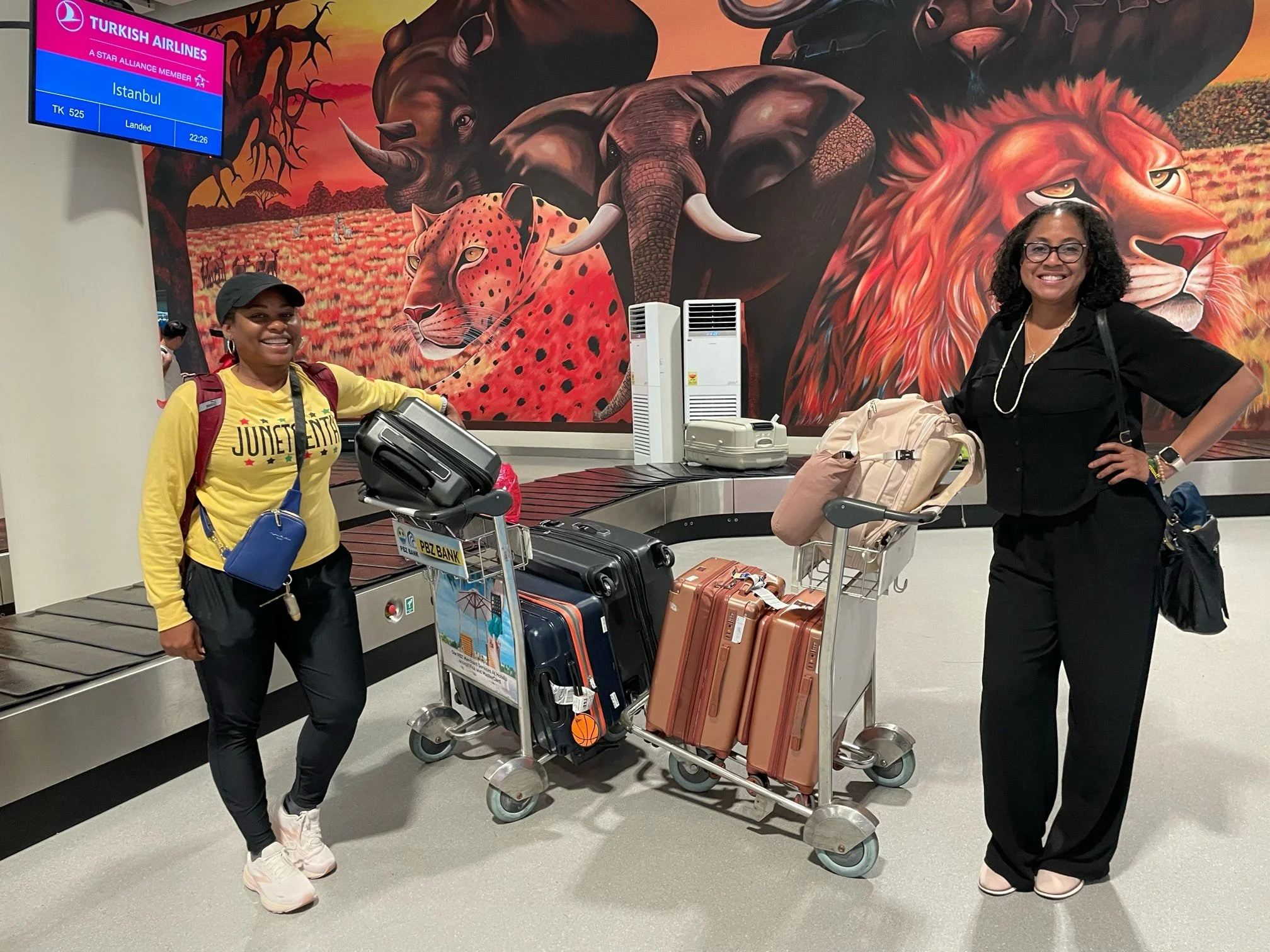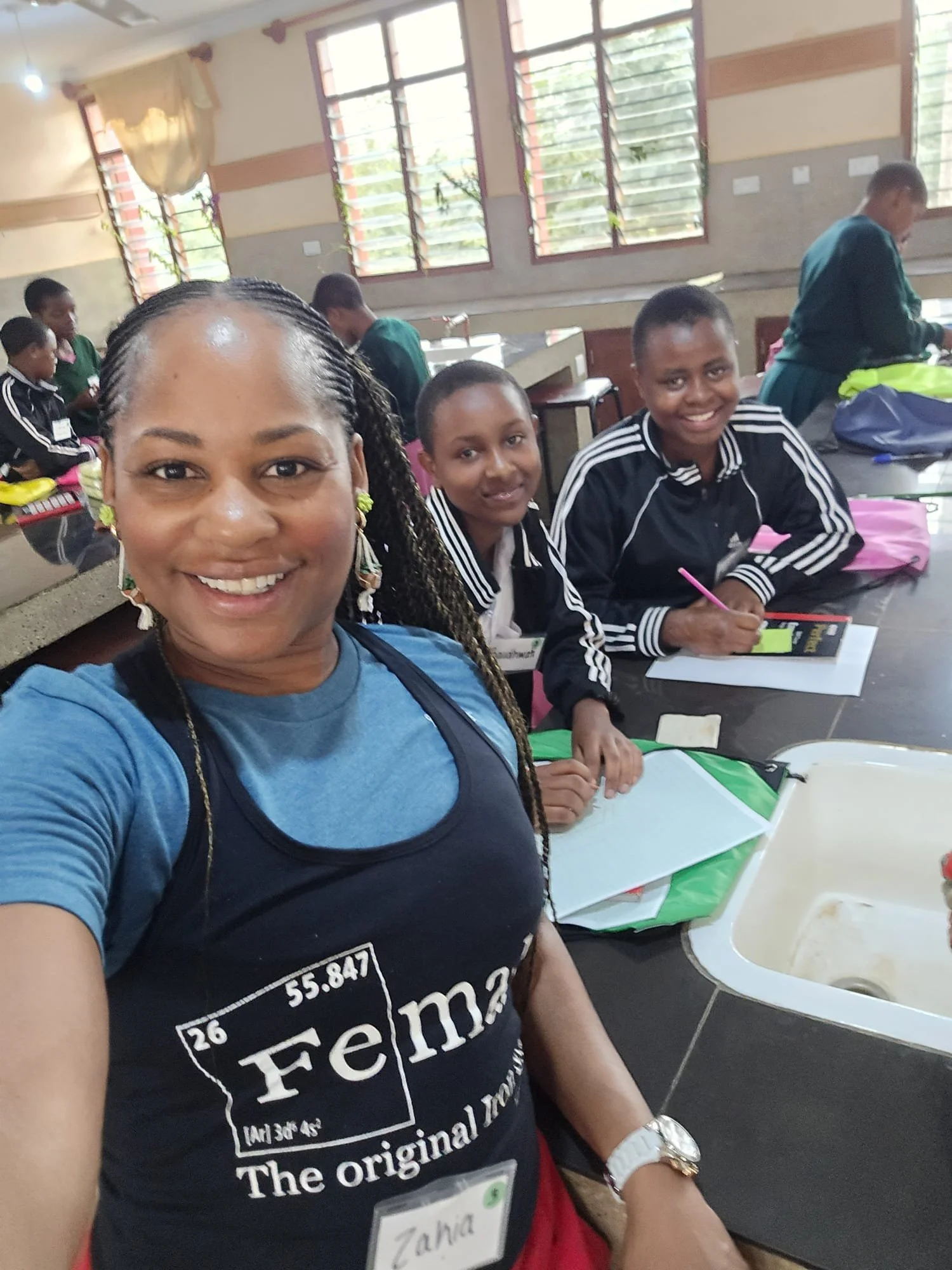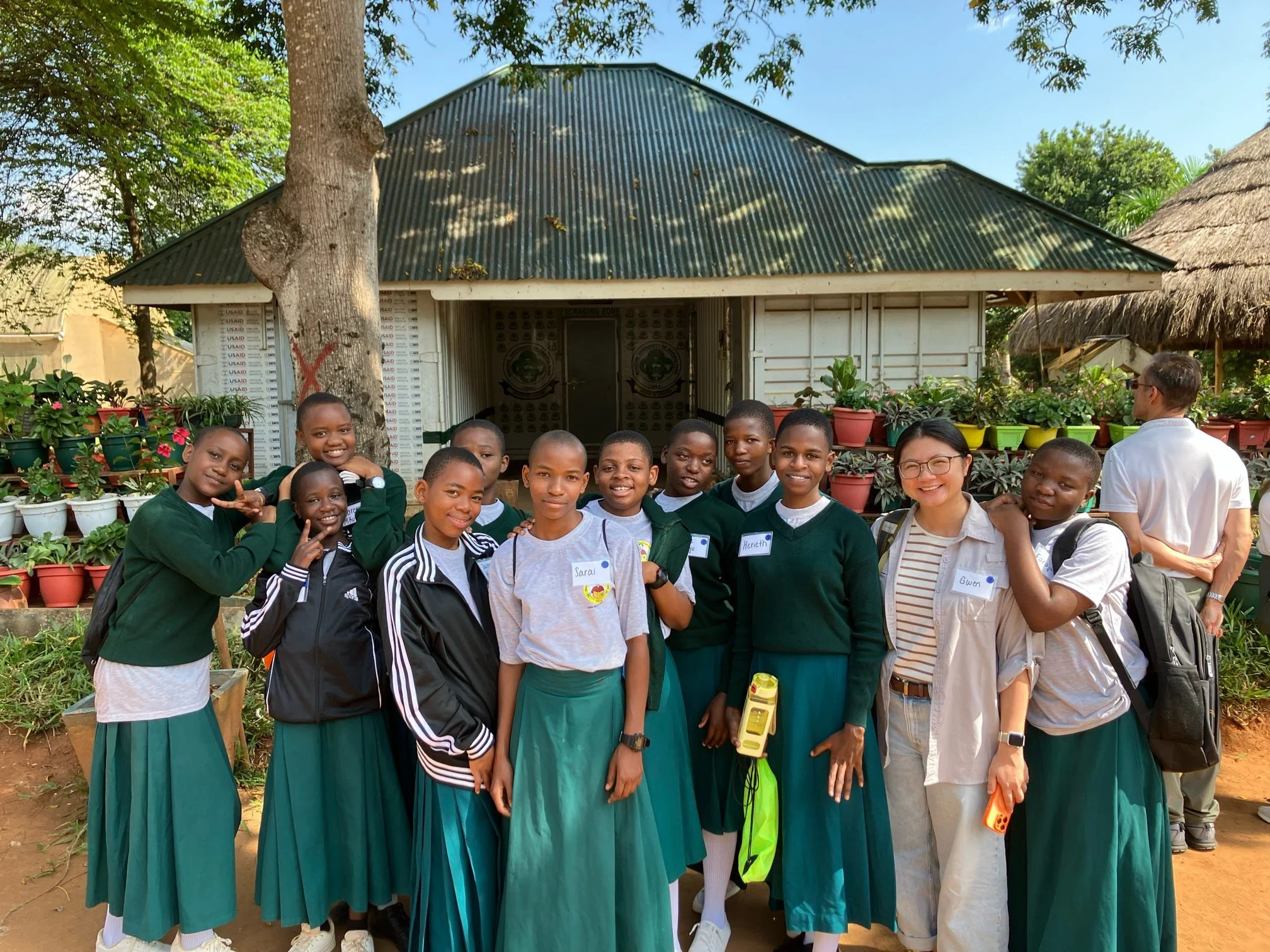Science, Sisterhood, and the Spark of Possibility
In today’s world, where global campaigns continue to call for gender equity in STEM, the face of science still too often excludes women—especially Black women.
But last month, at the SEGA Girls’ School, something extraordinary happened. SEGA students met not one, but two black women scientists: Dr. Zakia Williams-Greene and Jerbrena (Bre), whose very presence became a glimpse of futures yet imagined.
For both accomplished women in STEM, the experience was deeply personal. Neither grew up dreaming of a career in science—not because they didn’t love it, but because no one ever pointed them toward it. No teachers nudging them toward research. No workshops introducing possibilities. No signs that said: you belong here. At least not in their formative years.
“Not one person said, you really have aptitude for this. Here's this program,” Bre recalls.
For Bre, the path into STEM wasn’t paved by encouragement, it was driven by necessity. Living with a chronic illness, Bre turned to science as a way to understand her own body, to ask questions, and to reclaim agency over her life. What began as survival sparked a lifelong career in public health research.
Dr. Williams-Greene always did well in science. But like so many girls, she lacked access and exposure. “I didn’t even know what a PhD was and didn’t meet a Black woman with a PhD until I was 18,” she shared. That moment came through a NASA-funded program led by Dr. Williams, one of the few educators intentionally recruiting and mentoring minority students into science degrees. It was her first glimpse of someone who looked like her thriving in science, and it changed everything.
When women make up just one in three scientists globally, and only 28% of the STEM global workforce, with even lower numbers in sub-Saharan Africa, visibility isn’t a luxury. It’s a lifeline.
When Purpose Aligns, Impact Follows
Scientific progress depends on diversity of thought—and yet, women remain vastly underrepresented in STEM. According to UNESCO, “this imbalance limits diversity of ideas and research, introduces bias in research, and risks overlooking key perspectives as we tackle global challenges.” The result is a scientific landscape that too often overlooks women’s experiences, health needs, and contributions.
Dr. Williams-Greene and Bre know this truth intimately. It’s what drew them to each other at a conference designed to build community and celebrate Black excellence in STEM. Even in a room full of changemakers, their connection stood out.
“We just clicked,” Dr. Williams-Greene recalls. “It seemed like almost everything that she was saying about her path into science, her passion for science, and her why aligned with mine.”
Within weeks, they were collaborating across states and tight schedules, to build a STEM curriculum for the SEGA Girls’ School.
A Life-Affirming Week at SEGA
What followed was a week of long days, sisterhood, laughter, tears, and transformative moments. The STEM Adventures at SEGA Program welcomed 8 volunteers, 6 SEGA graduates, 3 SEGA science teachers, and 5 guest experts in Smart Agriculture, Astronomy, and Ophthalmology. Together, they helped students explore real-world STEM applications, including a visit to Sokoine University, "a real campus with real possibilities," as one graduate put it.
Students tackled the challenge: What technologies can Tanzanian farmers use to combat climate change? They built and presented creative 3D prototypes—greenhouses, aquaculture farms, composting systems, and more. Form 1 STEM Club students even led a peer presentation using SEGA’s weather station, showing leadership and budding passion. The students delivered their presentation with such aptitude that their ideas are now under review for potential implementation at the school, a powerful reminder of what happens when you nurture creativity and trust girls to lead.
Watching the curriculum come to life and witnessing students light up with curiosity moved Dr. Williams-Greene and Bre in ways they hadn’t anticipated. “To be the very person I didn’t know existed at their age,” Dr. Williams-Greene said, “and to be the one who can inspire them to become a unicorn—it’s an honor I take very seriously.”
What they helped ignite at SEGA wasn’t just inspiring, it’s the kind of intentional, equity-driven intervention that global leaders agree the world needs more of.
Where Change Begins
UNESCO identifies two core solutions to close the gender gap in science: dismantling gender stereotypes and opening educational pathways early.
This starts with visibility.
“Early exposure to female role models, mentors and inclusive learning environments is key to dismantling gender stereotypes and encouraging girls to pursue STEM pathways,” UNESCO emphasizes.
Undoubtedly, when girls see women like Bre and Dr. Williams-Greene, scientists who look like them, speak with authenticity, and radiate passion, it plants a seed. Because when a girl sees herself in science, it doesn’t just change what she wants to be. It changes what she believes is possible.
But visibility isn’t enough.
Girls need access. Early, interactive, hands-on access. “Education plays a pivotal role in making the path to a career as a scientist seem both appealing and accessible,” says UNESCO. From integrating science into early education to funding extracurricular STEM programs like STEM Adventures at SEGA, access builds the belief required for girls to see themselves in this space.
As Dr. Williams-Greene put it, “When you believe someone will go far, you treat them like they’re destined to. You speak to their potential. You open doors.” That’s why programs like STEM Adventures at SEGA matter. They don’t just teach content they shape confidence, and interest. They treat girls like the future scientists they already are.
Science needs HER
The presence of Dr. Williams-Greene and Bre—a scientist and a public health researcher—at SEGA was nothing short of revolutionary. Not because they were rare, though they are. But because they made space.
Space for curiosity. Space for questions. Space for girls who’d never seen themselves reflected in a microscope, a lab bench, or a research paper. Girls like them.
This wasn’t just a visit. It was a mirror. A moment that said to SEGA Girls: you belong here too.
As Bre beautifully summed it up:
“If we want to build young girls who contribute meaningfully to their communities, then maybe what I’ve done is just the beginning. If even one girl from SEGA takes what she’s learned and uses it to uplift her entire village—that’s far more impactful than anything I’ve ever done. That thought alone gives me chills.”
Because you can’t be what you can’t see. Let’s keep making sure she sees herself—in science, in leadership, in every space where her voice and brilliance belong.














